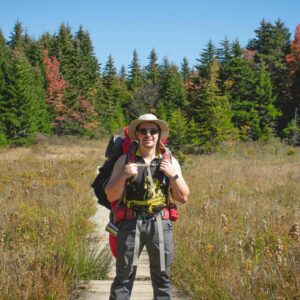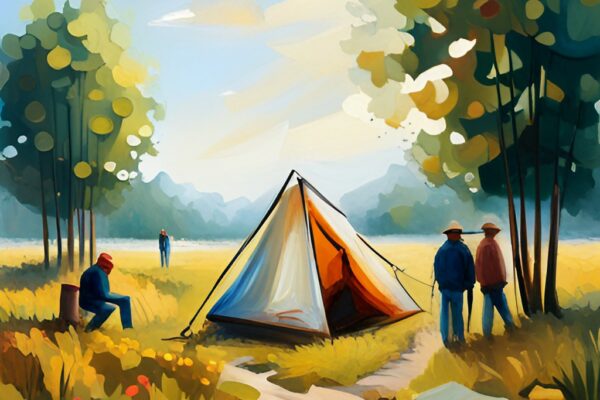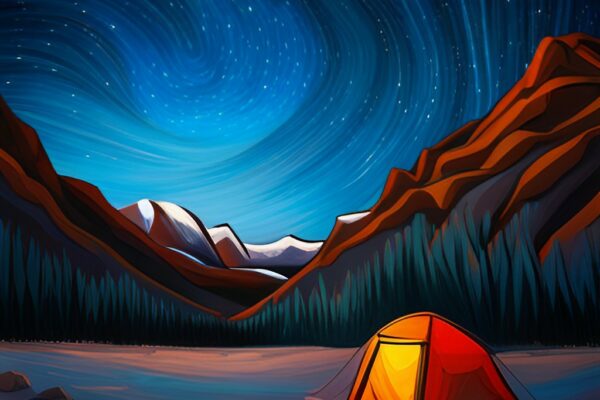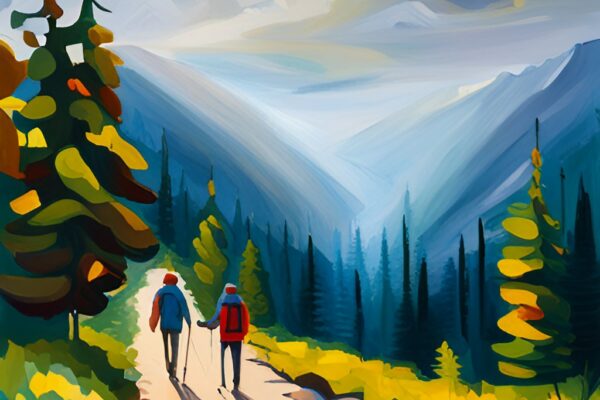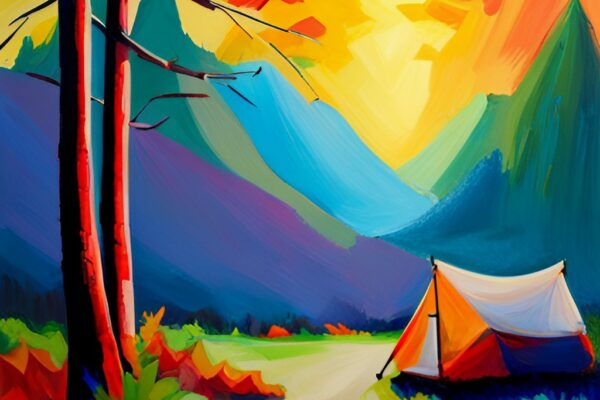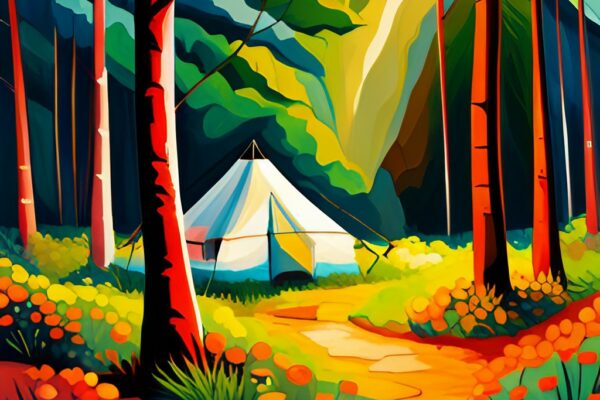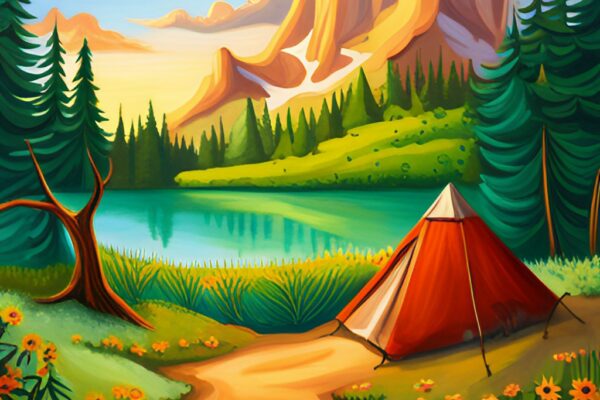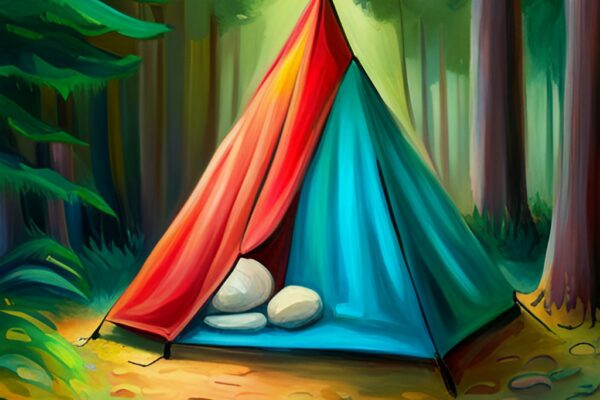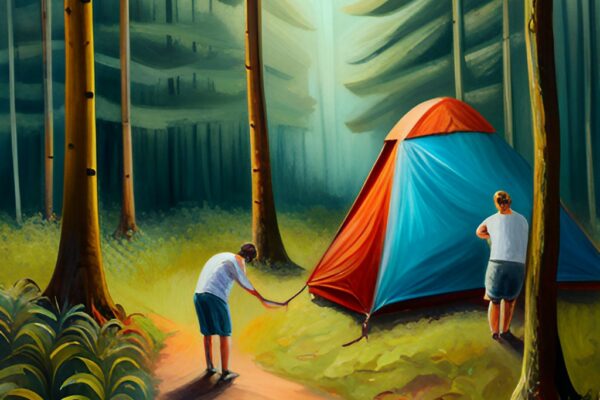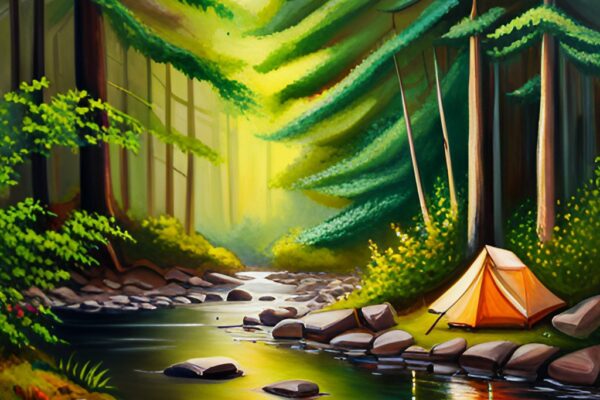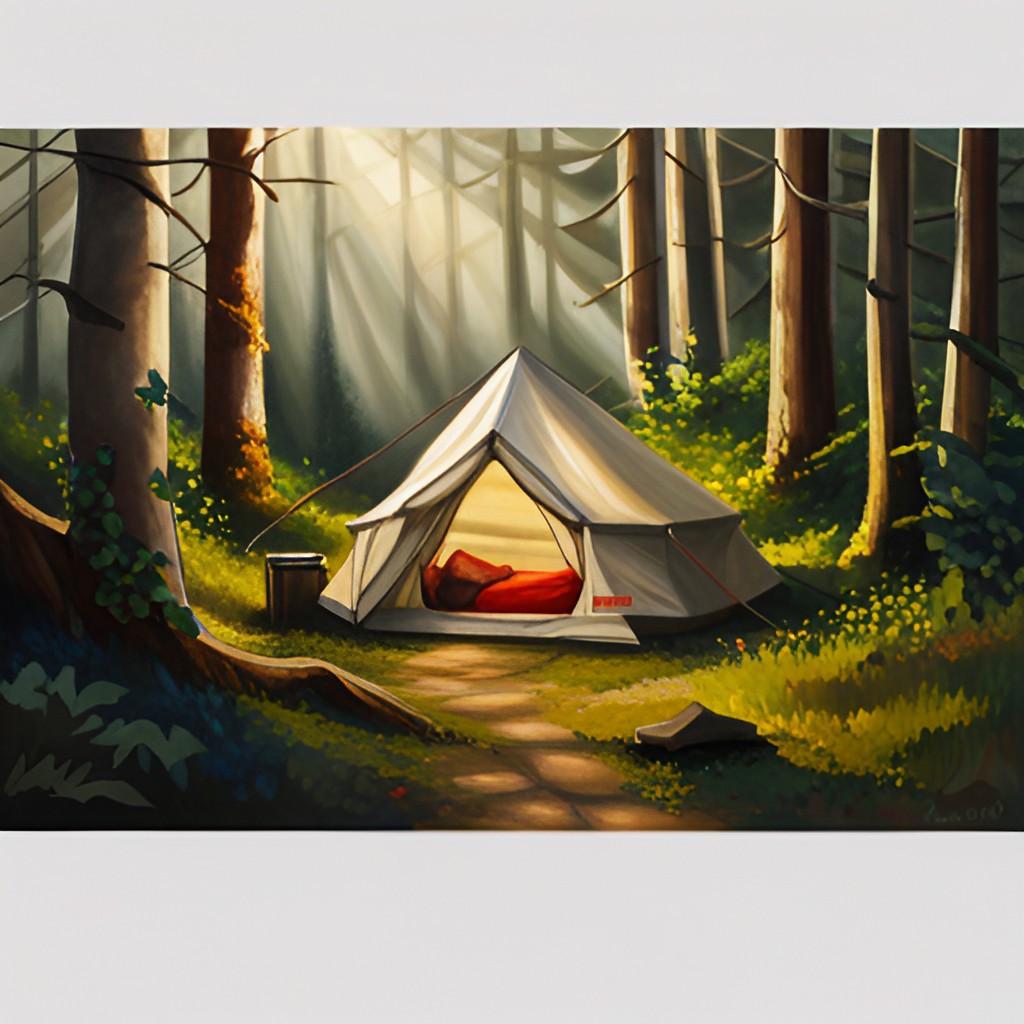
Are you craving an adventurous getaway where you can immerse yourself in nature, find solitude, and embark on a journey of self-discovery? Solo tent camping might be the perfect escape for you. This blog will cover many topics to equip you with the essential knowledge for a successful solo camping trip.
From the necessary equipment and gear to comprehensive strategies for planning and preparing, we’ll leave no stone unturned. You’ll discover valuable insights on setting up a solo tent campsite, determining the best time to go camping, and understanding the factors to consider for a memorable experience.
Safety is a paramount concern, and we’ll delve into why bringing a first-aid kit is essential and how to protect yourself from wildlife encounters while camping alone in the wilderness. Plus, we’ll explore the best methods for filtering and purifying water and practical tips for preventing and managing blisters while hiking during your solo camping adventures.
We’ll also address some common questions about solo camping, including why people choose to go solo, the safety considerations for both men and women, and whether sleeping directly on the ground is safe. By the end of this blog series, you’ll have a comprehensive understanding of solo tent camping and be fully prepared to confidently embark on your solo adventure.
So, whether you’re seeking solitude, personal growth, or a chance to reconnect with nature, join us on this exciting journey as we uncover the tips, tricks, and insights for a safe and enjoyable solo tent camping experience. Let’s embrace the serenity of the great outdoors and discover the wonders that await us. Get ready to embark on an unforgettable adventure into solo tent camping!
- What Are the Essential Equipment and Gear Needed for Solo Tent Camping?
- What Are the Best Planning Strategies for a Solo Camping Trip?
- What Are the Best Tips for Setting Up a Solo Tent Campsite?
- When Is the Best Time to Go Solo Tent Camping, and What Factors Should You Consider?
- Why Is It Essential to Bring a First-Aid Kit on a Solo Camping Trip?
- How Can You Protect Yourself From Wildlife While Camping Alone in the Wilderness?
- What Are the Best Methods for Filtering and Purifying Water While Solo Camping?
- How Can I Prevent and Manage Blisters While Hiking During Solo Tent Camping Trips?
- Solo Tent Camping: Tips and Tricks for a Safe and Enjoyable Experience – Frequently Asked Questions
- Solo Tent Camping: Tips and Tricks for a Safe and Enjoyable Experience – Conclusion
- Solo Tent Camping: Tips and Tricks for a Safe and Enjoyable Experience – Recommended Reading
What Are the Essential Equipment and Gear Needed for Solo Tent Camping?
When embarking on a solo tent camping adventure, having the right equipment and gear is crucial to ensure a safe and enjoyable experience. Here is a comprehensive list of essential items you’ll need:
1. Tent – Essential Equipment and Gear Needed for Solo Tent Camping
Choose a lightweight and durable tent designed for solo camping. Look for one with an easy setup and good weather resistance.
2. Sleeping Bag – Essential Equipment and Gear Needed for Solo Tent Camping
Opt for a sleeping bag that suits the climate you’ll be camping in. Consider temperature ratings and insulation type (synthetic or down) for optimal comfort.
3. Sleeping Pad – Essential Equipment and Gear Needed for Solo Tent Camping
A sleeping pad provides insulation and cushioning between you and the ground. Look for a compact and comfortable pad that suits your sleeping style.
4. Backpack – Essential Equipment and Gear Needed for Solo Tent Camping
Invest in a well-fitting backpack with enough capacity to carry your gear and supplies. Look for features like padded straps, hip belts, and multiple compartments for organization.
5. Camp Stove – Essential Equipment and Gear Needed for Solo Tent Camping
A portable camp stove allows you to cook meals and boil water. Choose a stove that is lightweight, easy to use, and fuel-efficient.
6. Cookware and Utensils – Essential Equipment and Gear Needed for Solo Tent Camping
Carry a set of lightweight, non-stick cookware and utensils for meal preparation. Consider a pot, pan, spatula, collapsible bowl, and cup.
7. Camera or Binoculars – Essential Equipment and Gear Needed for Solo Tent Camping
Capture the beautiful moments or enjoy wildlife sightings with a camera or binoculars to enhance your outdoor experience.
8. Camping Guidebook or Survival Manual – Essential Equipment and Gear Needed for Solo Tent Camping
Carry a guidebook specific to your camping area or a wilderness survival manual for valuable tips, local information, and emergency procedures.
9. Water Filtration System – Essential Equipment and Gear Needed for Solo Tent Camping
Ensure a safe drinking water source by bringing a reliable water filtration system or water purification tablets. This is especially important if you’ll be camping near natural water sources.
10. Headlamp or Flashlight – Essential Equipment and Gear Needed for Solo Tent Camping
A hands-free light source is essential for navigating around the campsite at night. Choose a headlamp or flashlight with adjustable brightness and long battery life.
11. Portable Power Bank – Essential Equipment and Gear Needed for Solo Tent Camping
Keep your electronic devices charged with a portable power bank. Look for one with sufficient capacity and multiple USB ports.
12. Navigation Tools – Essential Equipment and Gear Needed for Solo Tent Camping
Carry a map, compass, and/or GPS device to navigate unfamiliar areas. Learn basic navigation skills before your trip to ensure you can find your way.
13. Multi-tool – Essential Equipment and Gear Needed for Solo Tent Camping
A versatile multi-tool can come in handy for various tasks such as repairing gear, opening cans, and cutting ropes. Choose one with essential tools like a knife, pliers, and screwdrivers.
14. First Aid Kit – Essential Equipment and Gear Needed for Solo Tent Camping
Be prepared for any minor injuries or medical emergencies with a well-stocked first aid kit. Include bandages, antiseptic wipes, pain relievers, and necessary personal medications.
15. Fire Starter – Essential Equipment and Gear Needed for Solo Tent Camping
Carry reliable fire-starting tools such as waterproof matches, a lighter, or a fire starter kit. Ensure you know how to safely start and extinguish a campfire.
16. Extra Clothing – Essential Equipment and Gear Needed for Solo Tent Camping
Pack extra layers of clothing to prepare for changing weather conditions. Include a waterproof jacket, thermal layers, socks, and a hat to stay warm and dry.
17. Personal Hygiene Products
Bring travel-sized toiletries like biodegradable soap, toothpaste, toilet paper, and a small towel for personal hygiene.
18. Insect Repellent – Essential Equipment and Gear Needed for Solo Tent Camping
Protect yourself from mosquitoes and other biting insects by bringing a DEET-based insect repellent or natural alternatives like citronella or lemon eucalyptus oil.
19. Sun Protection – Essential Equipment and Gear Needed for Solo Tent Camping
Carry sunscreen with a high SPF rating, a broad-brimmed hat, sunglasses, and lip balm with SPF to shield your skin from harmful UV rays.
20. Repair Kit – Essential Equipment and Gear Needed for Solo Tent Camping
Pack a small repair kit that includes duct tape, a sewing kit, and extra cordage for quick gear fixes in case of damage.
21. Emergency Whistle – Essential Equipment and Gear Needed for Solo Tent Camping
Carry a loud whistle to attract attention in emergencies or if you get lost. Three short blasts are the international distress signal.
22. Extra Food and Water – Essential Equipment and Gear Needed for Solo Tent Camping
Plan and pack enough non-perishable food and snacks for your trip. Also, carry extra water to stay hydrated, especially in remote areas.
23. Personal Safety Items – Essential Equipment and Gear Needed for Solo Tent Camping
Depending on your comfort level, consider carrying items like a pocket knife, bear spray (if camping in bear country), or a personal safety alarm.
24. Camping Chair or Mat – Essential Equipment and Gear Needed for Solo Tent Camping
A lightweight camping chair or a foldable mat provides a comfortable seating option around the campsite.
25. Moisture-proof Bags – Essential Equipment and Gear Needed for Solo Tent Camping
Keep your gear organized and dry using waterproof or moisture-proof bags to separate clothing, food, and other essentials inside your backpack.
Remember, the specific gear and equipment you need may vary based on the location, climate, and duration of your solo tent camping trip. Prioritize quality, durability, and lightweight options when selecting your gear to ensure a comfortable and safe adventure.
What Are the Best Planning Strategies for a Solo Camping Trip?
Planning and preparing for a solo camping trip is essential to ensure a safe and enjoyable experience. Here are some of the best strategies to consider:
1. Check the Weather Forecast – Best Planning Strategies for a Solo Camping Trip
Stay updated with the weather forecast for your camping dates. This will help you pack appropriate clothing and gear and plan for any weather-related challenges or changes to your itinerary.
2. Inform Others About Your Plans – Best Planning Strategies for a Solo Camping Trip
It’s crucial to inform someone trustworthy about your solo camping plans. Share your itinerary, expected return date, and emergency contact information. This ensures that someone knows your whereabouts and can alert authorities if needed.
3. Learn Basic Wilderness Skills – Best Planning Strategies for a Solo Camping Trip
Familiarize yourself with basic wilderness skills such as navigation, setting up a tent, starting a campfire, and administering basic first aid. Consider taking a wilderness survival course or practicing these skills before your trip.
4. Pack Essential Safety Items – Best Planning Strategies for a Solo Camping Trip
Carry essential safety items, including a first aid kit, navigation tools (map, compass, GPS), headlamp or flashlight, fire-starting tools, and a whistle. These items will help you navigate, stay safe, and handle emergencies effectively.
5. Practice Leave No Trace Principles – Best Planning Strategies for a Solo Camping Trip
Follow Leave No Trace principles to minimize your impact on the environment. Respect wildlife, dispose of waste properly, and leave the campsite as you found it. Preserve the natural beauty for future campers.
6. Test and Familiarize Yourself with Gear – Best Planning Strategies for a Solo Camping Trip
Before your trip, test and familiarize yourself with your camping gear. Set up your tent, practice using your stove, and ensure all equipment works. This helps avoid unpleasant surprises and gives you confidence in using your gear.
7. Pack Extra Food and Water – Best Planning Strategies for a Solo Camping Trip
Plan and pack enough food and water for your trip, plus some extra supplies in case of unexpected delays. Consider lightweight, non-perishable options that provide sufficient nutrition and energy.
8. Check Local Regulations – Best Planning Strategies for a Solo Camping Trip
Research and understand the specific regulations and guidelines for the area you’ll be camping in. This includes rules on campfire usage, wildlife encounters, fishing or hunting regulations, and any restrictions on pets or noise.
9. Share Your Itinerary with Others – Best Planning Strategies for a Solo Camping Trip
Share your detailed itinerary with a trusted friend or family member. Include information on your planned routes, campsites, and expected check-in times. This helps authorities locate you in case of an emergency.
10. Carry Adequate Communication Devices – Best Planning Strategies for a Solo Camping Trip
Depending on the remoteness of your camping location, consider carrying communication devices such as a satellite phone, two-way radios, or a Personal Locator Beacon (PLB)
11. Research Your Destination – Best Planning Strategies for a Solo Camping Trip
Start by researching potential camping destinations. Consider accessibility, terrain, climate, regulations, and nearby amenities. Look for reliable sources of information, such as official park websites, guidebooks, and online forums.
12. Check Permits and Reservations – Best Planning Strategies for a Solo Camping Trip
Determine if your chosen camping location requires permits or reservations. Some popular sites may have limited availability, so securing your spot in advance is crucial. Check if there are any fees involved and make the necessary arrangements.
13. Plan Your Itinerary – Best Planning Strategies for a Solo Camping Trip
Create a detailed itinerary for your solo camping trip. Determine the duration of your stay, planned activities, and potential hiking or exploration routes. Consider your fitness level, experience, and the time needed to accomplish each activity.
14. Assess Your Skills and Fitness – Best Planning Strategies for a Solo Camping Trip
Be honest about your skills and fitness level. If you’re new to camping or hiking, start with easier trails and gradually progress to more challenging ones. Evaluate your physical abilities and choose activities that match your skill set.
15. Make a Packing List – Best Planning Strategies for a Solo Camping Trip
Create a comprehensive packing list to ensure you have all the necessary gear and supplies. Refer to the previous question’s answer for a detailed list of essential camping equipment. Customize the list based on your specific needs and the requirements of your destination.
What Are the Best Tips for Setting Up a Solo Tent Campsite?
Setting up a solo tent campsite efficiently and effectively is crucial for a comfortable and safe camping experience. Here are the best tips to help you in this process:
1. Choose the Right Location – Tips for Setting Up a Solo Tent Campsite
Look for a flat, level ground area to set up your tent. Avoid areas prone to flooding, uneven terrain, or rocky surfaces. Clear debris or sharp objects from the ground to ensure a comfortable sleeping surface.
2. Clear the Site – Tips for Setting Up a Solo Tent Campsite
Before setting up your tent, clear the campsite of any rocks, branches, or other potential hazards. This helps prevent damage to your tent and provides a clean area for camping.
3. Orient the Tent Correctly – Tips for Setting Up a Solo Tent Campsite
Check the direction of the wind and position your tent accordingly. Consider the sunrise and sunset to maximize natural light and ventilation inside the tent.
4. Use a Groundsheet or Footprint – Tips for Setting Up a Solo Tent Campsite
Place a groundsheet or footprint under your tent to protect the floor from moisture, dirt, and abrasion. This additional layer helps extend the lifespan of your tent and provides added insulation.
5. Secure the Tent – Tips for Setting Up a Solo Tent Campsite
Use stakes or pegs to secure your tent to the ground. Ensure the tent is taut and properly pitched to withstand wind and weather. Use guylines and tensioners to add stability.
6. Organize the Interior – Tips for Setting Up a Solo Tent Campsite
Set up your sleeping area and gear in an organized manner inside the tent. Utilize pockets, gear lofts, and storage compartments for easy access to essentials. Keep your sleeping area separate from gear to maintain cleanliness.
7. Consider Ventilation – Tips for Setting Up a Solo Tent Campsite
Proper ventilation is crucial to prevent condensation buildup inside the tent. Open vents, windows, and mesh panels to allow fresh air to circulate. This helps regulate temperature and reduce moisture.
8. Manage Cables and Cords – Tips for Setting Up a Solo Tent Campsite
Keep cables and cords organized and safely tucked away to avoid tripping hazards and damage to your tent. Use cable organizers or straps to secure and manage loose wires.
9. Create a Campsite Kitchen – Tips for Setting Up a Solo Tent Campsite
Set up a designated area for cooking and food preparation. Keep food away from the tent to prevent attracting wildlife. Use a camp stove or fire pit safely from the tent and follow proper safety precautions.
10. Follow Leave No Trace Principles – Tips for Setting Up a Solo Tent Campsite
Practice responsible camping by adhering to Leave No Trace principles. Minimize your environmental impact by avoiding damage to vegetation, properly disposing of waste, and leaving the campsite clean and undisturbed.
Following these tips, you can efficiently set up your solo tent campsite, ensuring a comfortable and organized space for your camping adventure.
When Is the Best Time to Go Solo Tent Camping, and What Factors Should You Consider?
The best time to go solo tent camping depends on your personal preferences, the location of your camping site, and the weather conditions. Here are some factors to consider when choosing the best time to go solo tent camping:
1. Season – Best Time to Go Solo Tent Camping
Different seasons offer unique camping experiences. Generally, the best time to go solo tent camping is during the warmer months, between late spring and early fall. However, depending on your location, you may be able to camp year-round.
2. Weather – Best Time to Go Solo Tent Camping
Check the weather forecast before your camping trip. Avoid camping during extreme weather conditions such as thunderstorms, high winds, or extreme temperatures. Plan accordingly and pack appropriate gear for the anticipated weather conditions.
3. Crowds – Best Time to Go Solo Tent Camping
Consider how crowded your camping site may be. Avoid peak-season camping or popular destinations if you prefer solitude and privacy. Alternatively, choose a popular camping destination if you enjoy socializing and meeting other campers.
4. Daylight – Best Time to Go Solo Tent Camping
Summer daylight hours are longer, providing more outdoor activities and exploration time. However, daylight hours are shorter during winter, and you may need to adjust your schedule accordingly.
5. Wildlife – Best Time to Go Solo Tent Camping
Certain wildlife may be more active during certain times of the year. Research the wildlife in the area and plan accordingly. Take necessary precautions such as storing food properly and avoiding certain activities during peak wildlife activity.
6. Availability – Best Time to Go Solo Tent Camping
Check the availability of your desired camping site and plan accordingly. During peak season, camping sites may fill up quickly, and reservations may be required. Plan to secure your camping spot.
Why Is It Essential to Bring a First-Aid Kit on a Solo Camping Trip?
Bringing a first-aid kit on a solo camping trip is essential for several reasons. Here’s why it is crucial to have a well-stocked first-aid kit:
1. Prompt Medical Attention – Importance of Bringing a First-Aid Kit on a Solo Camping Trip
When camping alone, access to immediate medical attention may be limited. A first-aid kit allows you to promptly provide immediate care and address minor injuries or illnesses.
2. Basic Injury Treatment – Importance of Bringing a First-Aid Kit on a Solo Camping Trip
Outdoor activities and unfamiliar environments can increase the risk of minor injuries such as cuts, scrapes, burns, or sprains. A first-aid kit provides the necessary supplies to clean wounds, apply dressings, and manage minor injuries.
3. Emergency Preparedness – Importance of Bringing a First-Aid Kit on a Solo Camping Trip
While camping, accidents can happen unexpectedly. A first-aid kit ensures you are prepared to handle emergencies, providing initial stabilization and preventing further injury until help arrives.
4. Allergy and Medication Management – Importance of Bringing a First-Aid Kit on a Solo Camping Trip
If you have known allergies or require specific medications, a first-aid kit allows you to carry necessary medications such as antihistamines, epinephrine auto-injectors, or asthma inhalers. This ensures you can manage potential allergic reactions or medical conditions while camping.
5. Pain and Symptom Relief – Importance of Bringing a First-Aid Kit on a Solo Camping Trip
Headaches, minor aches, and pains can occur during a camping trip. Your first-aid kit can include over-the-counter pain relievers, antacids, and anti-inflammatory medications to provide temporary relief.
6. Personalized Medications – Importance of Bringing a First-Aid Kit on a Solo Camping Trip
If you take any prescription medications, having them in your first-aid kit ensures an adequate supply during your camping trip. It’s crucial to consult your healthcare provider to determine the appropriate storage and administration of your prescription medications.
7. Insect and Animal Bites – Importance of Bringing a First-Aid Kit on a Solo Camping Trip
Outdoor environments can expose you to various insects, spiders, and wildlife encounters. A first-aid kit can include insect bite ointments, antihistamines, and other supplies to manage the symptoms of bites and stings.
8. Emergency Communication – Importance of Bringing a First-Aid Kit on a Solo Camping Trip
Your first-aid kit should include emergency contact information, a list of allergies or medical conditions, and a small notepad and pen for communication purposes.
9. Psychological Comfort – Importance of Bringing a First-Aid Kit on a Solo Camping Trip
A well-equipped first-aid kit provides security and peace of mind while camping alone. Knowing you have the necessary supplies to manage unexpected situations can alleviate anxiety and increase your confidence in handling emergencies.
10. Assistance to Others – Importance of Bringing a First-Aid Kit on a Solo Camping Trip
Carrying a first-aid kit allows you to assist fellow campers or hikers in need. Your supplies may come in handy to provide immediate care and support to others who may have encountered injuries or illnesses.
Remember, it is essential to periodically check and replenish your first-aid kit to ensure that all supplies are up to date, medications have not expired, and the kit is well-maintained. Being prepared with a comprehensive first-aid kit contributes to a safer and more enjoyable solo camping experience.
How Can You Protect Yourself From Wildlife While Camping Alone in the Wilderness?
Protecting yourself from wildlife while camping alone in the wilderness is important to ensure your safety. Here are some strategies and precautions to consider:
1. Research and Awareness – Protect Yourself From Wildlife While Camping Alone
Before your camping trip, research the wildlife species in the area you’ll be visiting. Learn about their behavior, habits, and potential encounters. This knowledge will help you understand the risks and take appropriate precautions.
2. Store Food Properly – Protect Yourself From Wildlife While Camping Alone
Wildlife is often attracted to food smells. Keep your food securely stored in bear-resistant containers or hang it from a tree branch away from your camping area. This minimizes the chances of attracting wildlife to your campsite.
3. Dispose of Trash Properly – Protect Yourself From Wildlife While Camping Alone
Dispose of trash and waste properly using bear-resistant containers or packing them out. Leaving trash in your campsite can attract animals and create potentially dangerous situations.
4. Keep a Clean Campsite- Protect Yourself From Wildlife While Camping Alone
Maintain a clean campsite by promptly cleaning up spills and crumbs. This prevents wildlife from being drawn to your camping area for food.
5. Use Bear Safety Precautions – Protect Yourself From Wildlife While Camping Alone
If you are camping in an area with bears, take additional precautions. Follow bear safety guidelines such as making noise while hiking, storing food away from your sleeping area, and avoiding cooking near your tent.
6. Use Bear-Resistant Containers – Protect Yourself From Wildlife While Camping Alone
Bear-resistant containers are specifically designed to prevent bears and other animals from accessing your food. Using these containers adds an extra layer of protection against wildlife encounters.
7. Avoid Feeding Wildlife – Protect Yourself From Wildlife While Camping Alone
Resist the temptation to feed wildlife. Feeding them can disrupt their natural behavior, make them dependent on human food, and increase the risk of dangerous encounters.
8. Keep Pets Under Control – Protect Yourself From Wildlife While Camping Alone
If you bring pets, keep them on a leash and always under control. Uncontrolled pets can provoke wildlife or attract their attention, leading to potential conflicts.
9. Make Noise – Protect Yourself From Wildlife While Camping Alone
While hiking or moving around your campsite, make noise to alert wildlife of your presence. This helps prevent surprising animals and reduces the likelihood of accidental encounters.
10. Respect Wildlife’s Space – Protect Yourself From Wildlife While Camping Alone
Observe wildlife from a safe distance and do not approach or try to interact with them. Keep in mind that nature is best appreciated when observed from a distance. That ensures their safety and yours.
What Are the Best Methods for Filtering and Purifying Water While Solo Camping?
When solo camping, ensuring access to clean and safe drinking water is essential for your health and well-being. Here are some of the best methods for filtering and purifying water while camping alone:
1. Boiling – Methods for Filtering and Purifying Water While Solo Camping
Boiling water is one of the most effective methods to kill harmful microorganisms. Bring water to a rolling boil for at least one minute (or longer at higher altitudes) to ensure it is safe to drink. This method is reliable but requires a heat source and may take time.
2. Water Filtration Systems – Methods for Filtering and Purifying Water While Solo Camping
Portable water filters or filtration systems are convenient and effective for removing bacteria, protozoa, and some viruses from water sources. Choose a filter with a pore size small enough to capture these microorganisms. Follow the manufacturer’s instructions for proper usage.
3. Water Purification Tablets – Methods for Filtering and Purifying Water While Solo Camping
Water purification tablets or drops are compact and lightweight. They contain chemicals such as chlorine or iodine that disinfect water by killing pathogens. Follow the instructions on the packaging for dosage and wait time before drinking.
4. UV Water Purifiers – Methods for Filtering and Purifying Water While Solo Camping
UV water purifiers use ultraviolet light to destroy microorganisms in water. These handheld devices are easy to use and can quickly treat water. Ensure the water is clear before using UV purifiers for optimal effectiveness.
5. Gravity Filters – Methods for Filtering and Purifying Water While Solo Camping
Gravity filters are convenient for solo camping as they require minimal effort. These systems use gravity to force water through a filter, removing contaminants. They are effective against bacteria and protozoa but may not remove viruses. Follow the manufacturer’s instructions for setup and usage.
6. Straw Filters – Methods for Filtering and Purifying Water While Solo Camping
Straw filters are compact and lightweight, allowing you to drink directly from a water source. These filters use a built-in filtration system to remove contaminants. Consider the filter’s capacity and lifespan, and clean or replace it as the manufacturer recommends.
7. Chemical Water Treatment – Methods for Filtering and Purifying Water While Solo Camping
Chlorine or iodine-based water treatment solutions can effectively disinfect water. Add the recommended dosage to the water, stir, and let it sit for the specified contact time. These chemicals are effective against most microorganisms but may not remove sediment or improve taste.
8. Ceramic Filters – Methods for Filtering and Purifying Water While Solo Camping
Ceramic filters are another option for water purification. These filters contain a ceramic element that traps microorganisms while allowing clean water to pass through. They can be cleaned and reused but may require regular maintenance.
9. Portable Reverse Osmosis Systems – Methods for Filtering and Purifying Water While Solo Camping
Portable reverse osmosis systems are more advanced but provide thorough water purification. These systems use a combination of filtration, activated carbon, and reverse osmosis to remove contaminants, chemicals, and impurities from water. They are effective but may be bulkier and require more setup.
10. Natural Filtration Methods – Methods for Filtering and Purifying Water While Solo Camping
You can utilize natural filtration methods in a wilderness area with running water. For example, you can filter water through layers of clean cloth or use a homemade sand and gravel filter. These methods are not foolproof, so assessing the water quality and potential contaminants is essential.
Remember to assess your camping area’s water sources and quality and choose the appropriate method(s) based on the specific conditions. Always prioritize clean water and follow the recommended guidelines for filtering and purifying to ensure your health and safety while solo camping.
How Can I Prevent and Manage Blisters While Hiking During Solo Tent Camping Trips?
Preventing and managing blisters while hiking during solo tent camping trips is crucial to ensure your comfort and mobility. Here are some tips to help you prevent and manage blisters:
1. Proper Footwear – Preventing and Managing Blisters While Hiking During Solo Tent Camping Trips
Wear well-fitting and comfortable hiking boots or shoes that provide adequate support and cushioning. Avoid tight or loose footwear, as it can increase friction and lead to blisters.
2. Break in Your Footwear – Preventing and Managing Blisters While Hiking During Solo Tent Camping Trips
Before embarking on a long hiking trip, break in your footwear by wearing them for shorter hikes or walks. This allows your feet and shoes to adjust and reduces the risk of developing blisters.
3. Moisture Management – Preventing and Managing Blisters While Hiking During Solo Tent Camping Trips
Moisture contributes to blister formation. Wear moisture-wicking socks that draw sweat away from your feet, reducing friction and moisture buildup. Consider using sock liners to further manage moisture.
4. Proper Sock Fit – Preventing and Managing Blisters While Hiking During Solo Tent Camping Trips
Choose socks that fit well and are seamless to minimize rubbing and friction. Avoid wearing cotton socks, as they retain moisture. Opt for synthetic or wool socks that help keep your feet dry.
5. Foot Care and Hygiene – Preventing and Managing Blisters While Hiking During Solo Tent Camping Trips
Keep your feet clean and dry during your camping trip. Wash and dry your feet thoroughly, especially between the toes. Use talcum powder or foot antiperspirant to help reduce moisture.
6. Lubrication – Preventing and Managing Blisters While Hiking During Solo Tent Camping Trips
Apply a thin layer of lubricant or petroleum jelly on areas prone to blisters, such as the heels or toes, before putting on your socks and shoes. This reduces friction and helps prevent blisters from forming.
7. Moleskin or Blister Pads – Preventing and Managing Blisters While Hiking During Solo Tent Camping Trips
Carry moleskin or blister pads in your first-aid kit. If you feel a hotspot or irritation, apply a protective pad or moleskin to the affected area. This helps reduce friction and protects the skin from further damage.
8. Duct Tape – Preventing and Managing Blisters While Hiking During Solo Tent Camping Trips
Duct tape can serve as a temporary measure to prevent blisters. If you feel a hotspot forming, apply a small duct tape. This can provide some cushioning and reduce friction.
9. Rest and Air Out Your Feet- Preventing and Managing Blisters While Hiking During Solo Tent Camping Trips
Take regular breaks during your hikes to rest and air out your feet. Remove your shoes and socks, allowing your feet to dry and cool. This helps reduce moisture and minimizes the risk of blisters.
10. Monitor and Treat Early Signs – Preventing and Managing Blisters While Hiking During Solo Tent Camping Trips
Regularly inspect your feet for any redness, hotspots, or discomfort. If you notice any early signs of a blister, immediately apply a blister pad or moleskin or take a break to address the issue before it worsens.
Solo Tent Camping: Tips and Tricks for a Safe and Enjoyable Experience – Frequently Asked Questions
Why Do People Go Solo Camping?
People go solo camping for various reasons, as it offers unique experiences and benefits different from camping with a group. Solo camping allows individuals to disconnect from the hustle and bustle of everyday life and reconnect with nature on a deeper level. It provides an opportunity for self-reflection, personal growth, and solitude.
Many people appreciate the freedom and flexibility of solo camping, as they can set their own pace, choose their preferred activities, and make decisions independently. It allows individuals to challenge themselves, build self-confidence, and enhance their outdoor skills. Solo camping also provides a sense of empowerment and self-reliance, as individuals are solely responsible for their well-being and decision-making.
It allows for introspection and a break from the demands of social interactions, providing a space for relaxation, rejuvenation, and inner peace. Additionally, solo camping offers a chance to fully immerse oneself in the natural environment, appreciating the beauty and serenity of untouched landscapes. Overall, solo camping provides a unique opportunity for individuals to explore their inner selves, foster a deep connection with nature, and experience a sense of freedom and self-discovery.
How Safe Is Solo Camping?
Solo camping can be safe but involves some inherent risks that must be managed. Safety largely depends on the individual’s preparation, knowledge, skills, location, weather conditions, and wildlife in the area. Individuals should thoroughly research the location before embark on a solo camping trip and ensure they are prepared for potential hazards or emergencies.
This includes checking the weather forecast, bringing appropriate gear and equipment, creating a detailed itinerary, and familiarizing oneself with the area’s wildlife and terrain. It is also important to inform family or friends of the itinerary and expected return time. While camping alone, individuals should be cautious and aware of their surroundings, including any signs of wildlife or potential hazards.
They should also be prepared for medical emergencies by carrying a first-aid kit and knowing basic first-aid techniques. In an emergency, it is vital to remain calm, assess the situation, and take appropriate action, whether calling for help or administering first aid. Ultimately, solo camping can be safe if individuals take proper precautions, stay alert, and are well-prepared for potential risks or emergencies.
Is Solo Camping Safe for a Woman?
Solo camping can be safe for women, but taking extra precautions and being aware of potential risks is important. Women may be more vulnerable to safety risks while camping alone, particularly in remote areas. However, with proper planning, preparation, and vigilance, women can minimize these risks and enjoy a safe and rewarding solo camping experience.
When solo camping, women should choose a safe and well-populated location, preferably with nearby access to emergency services. It is crucial to arrive at the campsite during daylight hours, set up camp quickly, and avoid attracting attention. Women should also inform someone of their itinerary and expected return time and carry a fully charged mobile phone or satellite communicator for emergencies.
Women should also take extra precautions to protect themselves from potential risks. This includes carrying self-defense items, such as a whistle, pepper spray, or personal alarm, and knowing how to use them. Women should also avoid traveling alone at night and keep their campsite secure by locking their tent and belongings.
Is It Safe to Sleep on the Ground Camping?
Sleeping on the ground while camping can be safe, but it depends on various factors. The safety and comfort of sleeping on the ground largely depend on the location, weather conditions, and the equipment used. Choosing a suitable campsite is vital, free from hazards such as sharp rocks, roots, or uneven terrain. Clear the ground of any debris or objects that could cause discomfort or pose a safety risk.
To enhance safety and comfort, it is recommended to use a proper sleeping pad or mattress. These provide insulation from the cold ground and cushioning for a more comfortable sleep. A sleeping bag appropriate for the temperature should also ensure warmth and protection.
Consider the wildlife in the area as well. In researching an emergency, it is essential to remain calm, assess the situation, and take appropriate action, whether ns such as securely storing food away from the sleeping area can help mitigate the risk of attracting wildlife.
It’s worth noting that some campers may prefer alternatives to sleeping directly on the ground, such as using a hammock or a camping cot. Depending on personal preference and the camping environment, these options provide additional elevation and can be more comfortable or suitable.
Solo Tent Camping: Tips and Tricks for a Safe and Enjoyable Experience – Conclusion
In conclusion, solo tent camping offers a unique opportunity for self-discovery, solitude, and connection with nature. By following the tips and tricks provided in this blog series, you can ensure a safe and enjoyable experience. This guide has covered everything from understanding the essential equipment and gear to planning and preparing for your trip, setting up a campsite, and staying safe in the wilderness.
Remember the importance of bringing a first-aid kit, protecting yourself from wildlife encounters, and filtering and purifying water for your hydration needs. Additionally, learn how to prevent and manage blisters while hiking and address common concerns regarding solo camping, including the safety considerations for women and sleeping on the ground.
So, pack your gear, embrace the adventure, and explore the beauty of solo tent camping. Disconnect from the noise of daily life, immerse yourself in the tranquility of nature, and discover the serenity that comes with solo camping. Unleash your inner explorer, gain new perspectives, and create lifelong memories in the great outdoors. Stay safe, stay prepared, and enjoy the incredible experience of solo tent camping. Happy camping!
Solo Tent Camping: Tips and Tricks for a Safe and Enjoyable Experience – Recommended Reading
20 Delicious and Nutritious Foods for Your Next Tent Camping Adventure – Fueling Your Adventure
Wilderness Survival 101 – 12 Essential Survival Skills Every Camper Should Master
10 Delicious and Easy Vegan Camping Meals to Satisfy Your Outdoor Appetite

